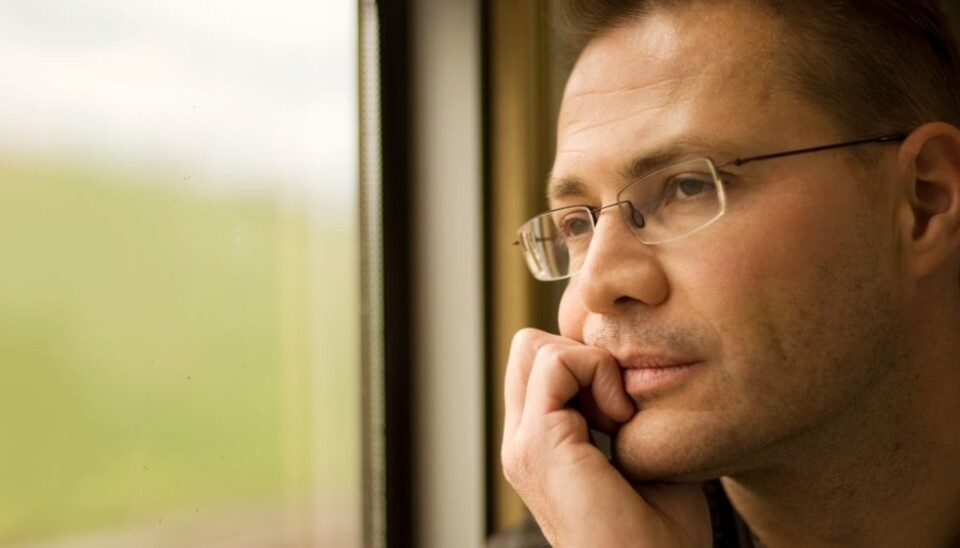
A quarter of Norwegian men never father children
Nearly one out of four men in Norway are childless at the age of 45.
Denne artikkelen er over ti år gammel og kan inneholde utdatert informasjon.
Norwegian women are much less likely to be childless.
Fertility figures from Statistics Norway show that fewer and fewer men in Norway are fathering children.
The share of men who are childless at age 45 rose from 14 percent in 1985 to 23 percent in 2013.
The share of women who had not become mothers by age 45 increased from 10 percent in 1985 to 13 percent in 2013.
Men want to have children too
![Percentages of childless men [menn] and women [kvinner] at age 45. The increase is much stronger among men than women. This graph, from Statistics Norway, covers the years 1985 to 2012.](https://image.sciencenorway.no/1401081.webp?imageId=1401081&width=960&height=720&format=jpg)
Why do so many men in Norway never have kids?
The development is paradoxical:
Norway is one of the countries in the Western World with the highest birth rates. More children are born per capita than nearly anywhere else.
Norway is also known to be a vanguard country with regard to equal rights for women and men.

“Both men and women in Norway answer in studies that having children is an important part of life. Few men or women consciously decide against having them. The desire to have kids has not changed,” says An-Magritt Jensen.
Jensen, a sociology professor at the Norwegian University of Science and Technology (NTNU) in Trondheim, concludes that something else must have changed in Norwegian society.
She has conducted research on this issue for several years, especially through interviews with men.
Tougher work live for men
“Expectations of Norwegian men have rocketed,” explains Jensen.
“On the one hand we have strong demands on fathers to spend time with their children and families.”
“On the other hand, developments in working life force a mounting number of men into project jobs. As a result people are expected to be accessible for work all the time.”
“These demands are hard for many men to combine,” says Jensen.
Planning, planning, planning
Children used to simply get born – but now they are planned. Decisions are made by parents about pregnancy and when it would be best to have a child. This is particularly the case among the segment of the population with higher education, where such planning is more the rule than the exception. And education levels have been rising steeply in the population.
“Couples are constantly finding new reasons to delay a pregnancy. Men especially. There are so many things that have to be done or experienced before starting off. So one day the woman and the man split up, without children.”
“Numerous studies also indicate that women are more intent on having children sometime in their lives than men are,” says Jensen.
As their biological clocks approach the age of infertility, women are eager to have children. But many men still entertain doubts; they procrastinate, and end up childless.
When women do give birth to children, it turns out that it can often be with men who have kids from previous relationships.
Working class man
The sociology professor at NTNU has interviewed men from both the upper middle class and the working class. The middle class in Norway is expanding while the working class is shrinking.
The description about career pressure above pertains especially to men from the middle and the upper middle classes.
Working class men live differently.
At the risk of generalising, it can be said they are more likely to be fans of spectator sports like football and might prefer to remain single to retain control over leisure time. Some working class men choose not to have children. Others are simply not found sufficiently attractive by women.
“When Norwegian men from the working class have children, it is more often by chance,” explains Jensen.
She stresses that one often finds the most delighted and devoted fathers in this group.
Recycled men
But women are always the pillars of a society’s fertility.
Norway can, in other words, be a country where many men never father children, even though its fertility rate is high.
What actually happens often is that men who are already fathers get recycled.
Women in the public sector
Jensen considers herself a strong advocate of gender equality.
Nevertheless, she ascertains that feminism and equal opportunity ideology have had an unequal impact on men and women in Norway.
“Improved rights have made life easier for parents in Norway, but for women in particular.”
“Women are also more likely to work in the public sector, which offers more secure working conditions. Much has been done to make it easy and affordable for women in Norway to have children, at least in comparison to other countries.”
Unthinkable not to become a father
“In other Western countries too there are men who never become fathers. But the proportion is especially high in Norway.”
“The combination of high fertility in the population and high childlessness among men is a rather peculiar Norwegian phenomenon. We need more information about this,” asserts Jensen.
She has recently completed a research project on fertility in Kenya, where she interviewed both men and women.
“When I ask Kenyan men whether they want to become fathers they burst out laughing. Of course, all of them want to have children. Anything else is unthinkable. The purpose of being a man is to become a father.”
Hitting the ceiling at 45
Most men can biologically become fathers nearly their entire lives. Everyone has heard of Bruce Willis or other celebrities who become fathers for the first time at an advanced age.
“In practice we see from birth statistics that extremely few men become fathers for the first time after the age of 45. When they have children at that age and beyond, they have already had others,” says Jensen.
------------
Read the Norwegian version of this article at forskning.no
Translated by: Glenn Ostling






























